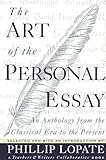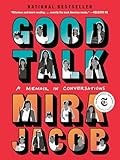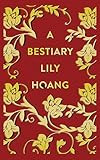As soon as I put my hands on A Harp in the Stars, I realized how lucky we readers (and writers) are that Randon Billings Noble not only curated this extraordinary collection, but also provided guideposts for reading.
Dubbed “An Anthology of Lyric Essays,” the book contains work by 50 authors, and offers four different forms of essay: flash, segmented, braided, and hermit crab. Among many others, contributors include Diane Seuss, Lidia Yuknavich, Tyrese L. Coleman, Casandra López, and Sayantani Dasgupta; writers we already know, and writers we need to know. The book’s subject matter covers the map of human emotions. In these distracting times, a lovely aspect of A Harp in the Stars is that you can open it to any essay, and instantly immerse yourself in a meaningful and gorgeous piece of writing.
Chief among the book’s pleasures is Noble’s introduction, a clearly written and enlightening chapter in which she notes that Michel de Montaigne may be the essay’s most well-known progenitor, but what about Sei Shonagon, a woman writing at the turn of the 10th century whose “pillow book full of what we might now call list or nonce or flash essays?” Noble walks us through Greek mythology, citing Apollo’s lyre as the root of the word “lyric,” and gives a brief history of various essay forms. She writes, “Lyric essays require a kind of passion, a commitment to weirdness in the face of convention, a willingness to risk confusion, and comfort with outsider status.”
Is there a better reason to open a book? I was fortunate to catch up with Randon Billings Noble by email.
The Millions: You write that lyric essays have the “power to soothe, to harrow, to persuade, to move, to raise, to rouse to overcome.” You say much more too! For those who have not read your anthology, can you talk about the lyric essay and how you came to it?
Randon Billings Noble: I came to the lyric essay haphazardly; I was writing them before I knew what they were. For one essay I thought, what if I used strikethroughs to show things I didn’t want to admit but were still true? For another, I thought, what if I divide this essay into segments without obvious transitions? Later I learned the term lyric essay and realized that’s what I had been writing.
Defining a lyric essay is tricky. These essays rely more on intuition than exposition. They often use image more than narration. They question more than answer. But as I write in my introduction, “despite all this looseness, the lyric essay still has the responsibilities of any essay: to try to figure something out, to play with ideas, to show a shift in thinking (however subtle). The whole of a lyric essay adds up to more than the sum of its parts.”
I came up with this definition: “a piece of writing with a visible / stand out / unusual structure that explores / forecasts / gestures to an idea in an unexpected way.” I clung to structure–or form –because it’s more discernable than other features of a lyric essay, like the use of intuition or “poetic” language.
TM: Speaking of form, I know that it is very important to you as well. Can you talk about that, and what might distinguish form in a lyric essay from that in a poem?
RBN: I’m not a poet but in my experience as a reader, the forms of many poems are strictly defined–a sonnet is very specific, as is a villanelle. The forms of lyric essays, which I’ve generally categorized as flash, segmented, braided, and hermit crab, have more latitude to them. A flash essay can be 10 words or 1000. A segmented essay can be any length, as long as it is divided into sections. A braided essay is a segmented essay with a repeated pattern to it–but the way the pattern repeats is entirely in the hands of the writer. And a hermit crab essay uses a form already in use such as a Yelp review, or a Web MD entry.
I like the way a particular form acts as a constraint. The limits that the form imposes can help push your thinking and expand your content. It’s strange that it works that way, but it does.
TM: Creating an anthology is complicated. Can you talk about how you reached out to writers and what you were looking for?
RBN: It was a lot harder than I thought it would be! I didn’t think it would be easy, but I thought it would be more straightforward.
The idea began simply–I wanted all the lyric essays that I admired, all the ones I teach, to be in one place. I couldn’t find an anthology dedicated to lyric essays, so I decided to make one. There were some previously published essays I knew I wanted to include, like Lidia Yuknavitch’s “Woven,” Elissa Washuta’s “Apocalypse Logic,” Davon Loeb’s “My Mother’s Mother,” and Dorothy Bedel’s “Body Wash.” But I knew there were all kinds of other lyric essays out there that I didn’t yet know about and hadn’t yet read. So, I put out a call and got more than 300 submissions for about 30 spots. It was a real challenge–and sometimes a heartbreaking one–to narrow it down.
TM: Once you had all these wonderful pieces, I can imagine that organizing them was a bear. Can you talk about that?
 RBN: After a few different attempts, I decided to order them with the same strategy I had used in my own collection, Be with me Always. I went for contrast within themes. I knew I wanted to start with Diane Seuss’s “Gyre” (which begins with “When I was a schoolgirl, now and then a delicious state would come over me”) and end with Steve Edward’s “The Last Cricket.” Then I tried to have a series of waves of theme or emotion. Each wave might loosely follow the same thread of content (essays about transformation, essays about family) but there would be contrast in terms of the form (a short essay followed by a longer one, a braided essay followed by a hermit crab), etc. Most people don’t read a collection or anthology straight through, but I wanted it to have a certain flow if they did. And I made sure each essay is labeled so you know what the form is—segmented, braided, etc.—whatever “wave” you might be riding.
RBN: After a few different attempts, I decided to order them with the same strategy I had used in my own collection, Be with me Always. I went for contrast within themes. I knew I wanted to start with Diane Seuss’s “Gyre” (which begins with “When I was a schoolgirl, now and then a delicious state would come over me”) and end with Steve Edward’s “The Last Cricket.” Then I tried to have a series of waves of theme or emotion. Each wave might loosely follow the same thread of content (essays about transformation, essays about family) but there would be contrast in terms of the form (a short essay followed by a longer one, a braided essay followed by a hermit crab), etc. Most people don’t read a collection or anthology straight through, but I wanted it to have a certain flow if they did. And I made sure each essay is labeled so you know what the form is—segmented, braided, etc.—whatever “wave” you might be riding.
TM: Can you talk about the editing process?
RBN: I wanted all the contributors to keep creative control over their essays, so I did a minimum of editing. Most of the edits were copyedits that came very late in the process and even then, I sometimes lobbied to defy grammar and keep the rhythm or mood of a particular sentence or passage. Since I’ve been edited in ways that I thought were too rough or that changed the meaning of my work, I didn’t want to do that to any of these essays. If I accepted an essay, I accepted it as it was.
TM: How did you come to writing and essay writing in particular?
RBN: In some ways I always wanted to be a writer. But my first career choice (at age seven) was to be a witch. My second was to be a spy. I feel like that played out: witch + spy = essayist.
 In high school I was always bending the rules of essay writing—using the forbidden first person, starting my essay with a story or a joke. I got compliments on my creativity but points off for deviating from the five-paragraph form. In college I had more latitude, but I was still pushing the boundaries of academic writing into something more creative. It was only in graduate school that I started to see that there was such a thing as a creative or literary essay—one that did serious thinking but expressed that thinking in a way that was more personal, more human, less certain, more wondering. I read Joan Didion’s “Goodbye to All That,” and then James Baldwin and then Richard Rodriguez and then Virginia Woolf and then Cheryl Strayed (“The Love of My Life”—before Wild) and I saw I was on a particular path, part of a longer tradition. It was very exciting to be joining that larger conversation.
In high school I was always bending the rules of essay writing—using the forbidden first person, starting my essay with a story or a joke. I got compliments on my creativity but points off for deviating from the five-paragraph form. In college I had more latitude, but I was still pushing the boundaries of academic writing into something more creative. It was only in graduate school that I started to see that there was such a thing as a creative or literary essay—one that did serious thinking but expressed that thinking in a way that was more personal, more human, less certain, more wondering. I read Joan Didion’s “Goodbye to All That,” and then James Baldwin and then Richard Rodriguez and then Virginia Woolf and then Cheryl Strayed (“The Love of My Life”—before Wild) and I saw I was on a particular path, part of a longer tradition. It was very exciting to be joining that larger conversation.
TM: Tell us about your reading life.
 RBN: I read rather a lot and pretty omnivorously—essays (of course), novels, graphic novels, you name it. Right now, I’m finishing up a big reading project—Philip Lopate’s anthology The Art of the Personal Essay, which I’ve been discussing with a small group of fellow essayists. It’s been great to read some “classic” essayists (Montaigne, Lamb, Baldwin, Didion) but there’s always so much more to go, including more lyric essays.
RBN: I read rather a lot and pretty omnivorously—essays (of course), novels, graphic novels, you name it. Right now, I’m finishing up a big reading project—Philip Lopate’s anthology The Art of the Personal Essay, which I’ve been discussing with a small group of fellow essayists. It’s been great to read some “classic” essayists (Montaigne, Lamb, Baldwin, Didion) but there’s always so much more to go, including more lyric essays.
 I’ve also recently read Good Talk by Mira Jacob and My Autobiography of Carson McCullers by Jenn Shapland, both of which really knocked my socks off.
I’ve also recently read Good Talk by Mira Jacob and My Autobiography of Carson McCullers by Jenn Shapland, both of which really knocked my socks off.
TM: Did any books in particular influence your writing life?
RBN: When I was in graduate school (not yet for writing but for Renaissance drama–another life for sure!) I took a 20th-century nonfiction class as a lark and read Joan Didion’s “Goodbye to All That.” I was in New York, and very young, and thought it completely possible to stay forever at the fair. When I was much older, and had said goodbye to New York, I came to understand what Didion was getting at. The seed was planted. I realized this was the kind of thing I wanted to write.



 Later I read Eva Saulitis’s collection Leaving Resurrection and felt that same chord of recognition. This is what it looks like to see a mind at work on the page. I feel it still when I read Maggie Nelson or Cathy Park Hong or Patrick Madden or Tressie McMillan Cottom. I feel like I’m constantly influenced by others’ formal choices—Maggie Nelson’s Bluets, Naja Marie Aidt’s When Death Takes Something from You Give It Back, Lily Hoang’s A Bestiary. It’s a great time to be a lyric essayist.
Later I read Eva Saulitis’s collection Leaving Resurrection and felt that same chord of recognition. This is what it looks like to see a mind at work on the page. I feel it still when I read Maggie Nelson or Cathy Park Hong or Patrick Madden or Tressie McMillan Cottom. I feel like I’m constantly influenced by others’ formal choices—Maggie Nelson’s Bluets, Naja Marie Aidt’s When Death Takes Something from You Give It Back, Lily Hoang’s A Bestiary. It’s a great time to be a lyric essayist.
TM: What’s next for you?
RBN: The pandemic has been incredibly disruptive to my creative life but I’m very much looking forward to getting back to writing. My next book is a lyric meditation on shadows, and I’m very keen to return to thinking about Rembrandt and Macbeth and Peter Pan and Joseph Cornell–and Bonnie Tyler.










